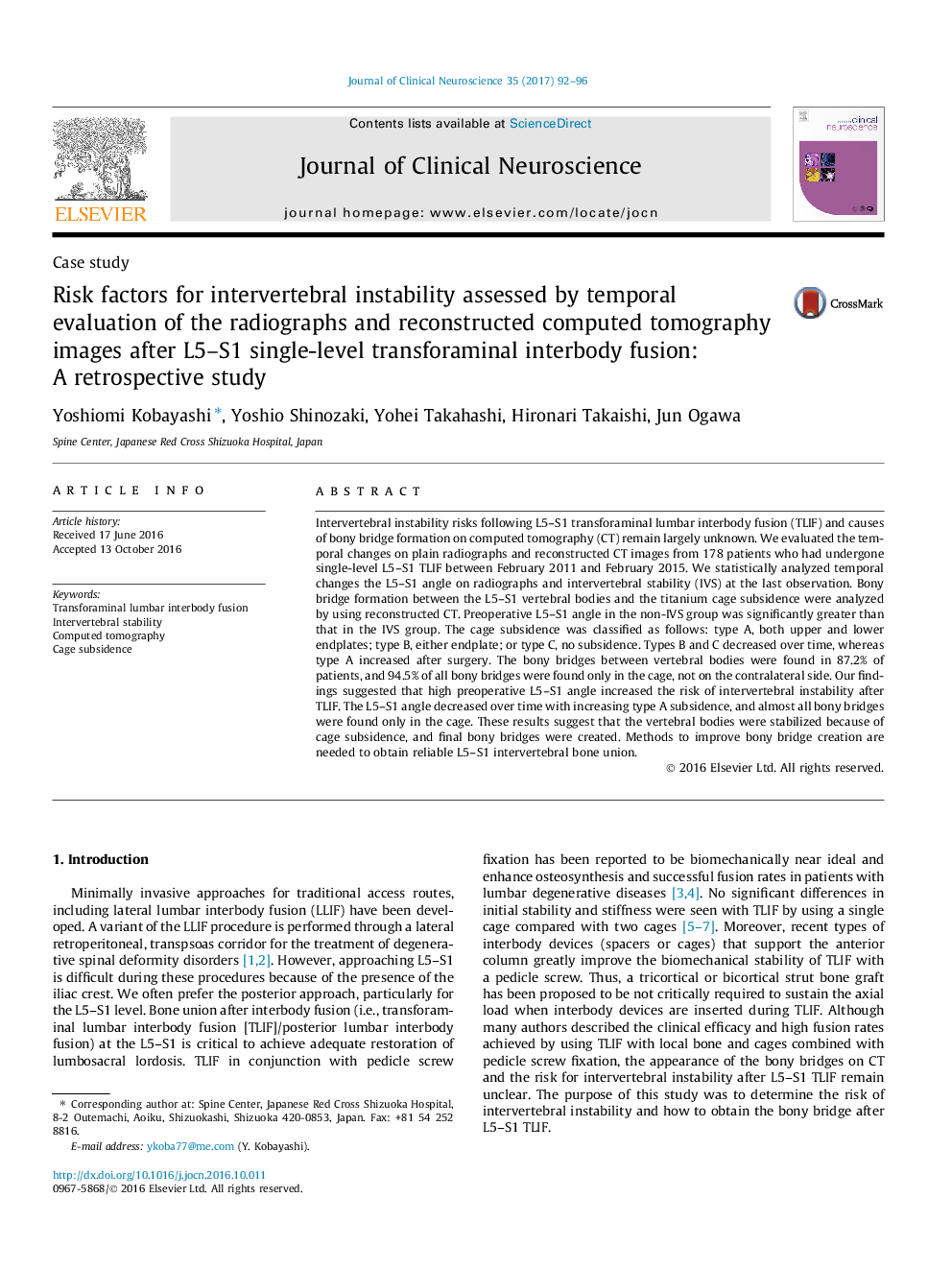| کد مقاله | کد نشریه | سال انتشار | مقاله انگلیسی | نسخه تمام متن |
|---|---|---|---|---|
| 5630079 | 1580281 | 2017 | 5 صفحه PDF | دانلود رایگان |

- A high L5-S1 angle increases the risk of intervertebral instability after TLIF.
- Vertebral body is stabilized by cage subsidence after TLIF using bullet-shaped cage.
- Mature bridging by bony trabeculae is achieved through the cage.
Intervertebral instability risks following L5-S1 transforaminal lumbar interbody fusion (TLIF) and causes of bony bridge formation on computed tomography (CT) remain largely unknown. We evaluated the temporal changes on plain radiographs and reconstructed CT images from 178 patients who had undergone single-level L5-S1 TLIF between February 2011 and February 2015. We statistically analyzed temporal changes the L5-S1 angle on radiographs and intervertebral stability (IVS) at the last observation. Bony bridge formation between the L5-S1 vertebral bodies and the titanium cage subsidence were analyzed by using reconstructed CT. Preoperative L5-S1 angle in the non-IVS group was significantly greater than that in the IVS group. The cage subsidence was classified as follows: type A, both upper and lower endplates; type B, either endplate; or type C, no subsidence. Types B and C decreased over time, whereas type A increased after surgery. The bony bridges between vertebral bodies were found in 87.2% of patients, and 94.5% of all bony bridges were found only in the cage, not on the contralateral side. Our findings suggested that high preoperative L5-S1 angle increased the risk of intervertebral instability after TLIF. The L5-S1 angle decreased over time with increasing type A subsidence, and almost all bony bridges were found only in the cage. These results suggest that the vertebral bodies were stabilized because of cage subsidence, and final bony bridges were created. Methods to improve bony bridge creation are needed to obtain reliable L5-S1 intervertebral bone union.
Journal: Journal of Clinical Neuroscience - Volume 35, January 2017, Pages 92-96